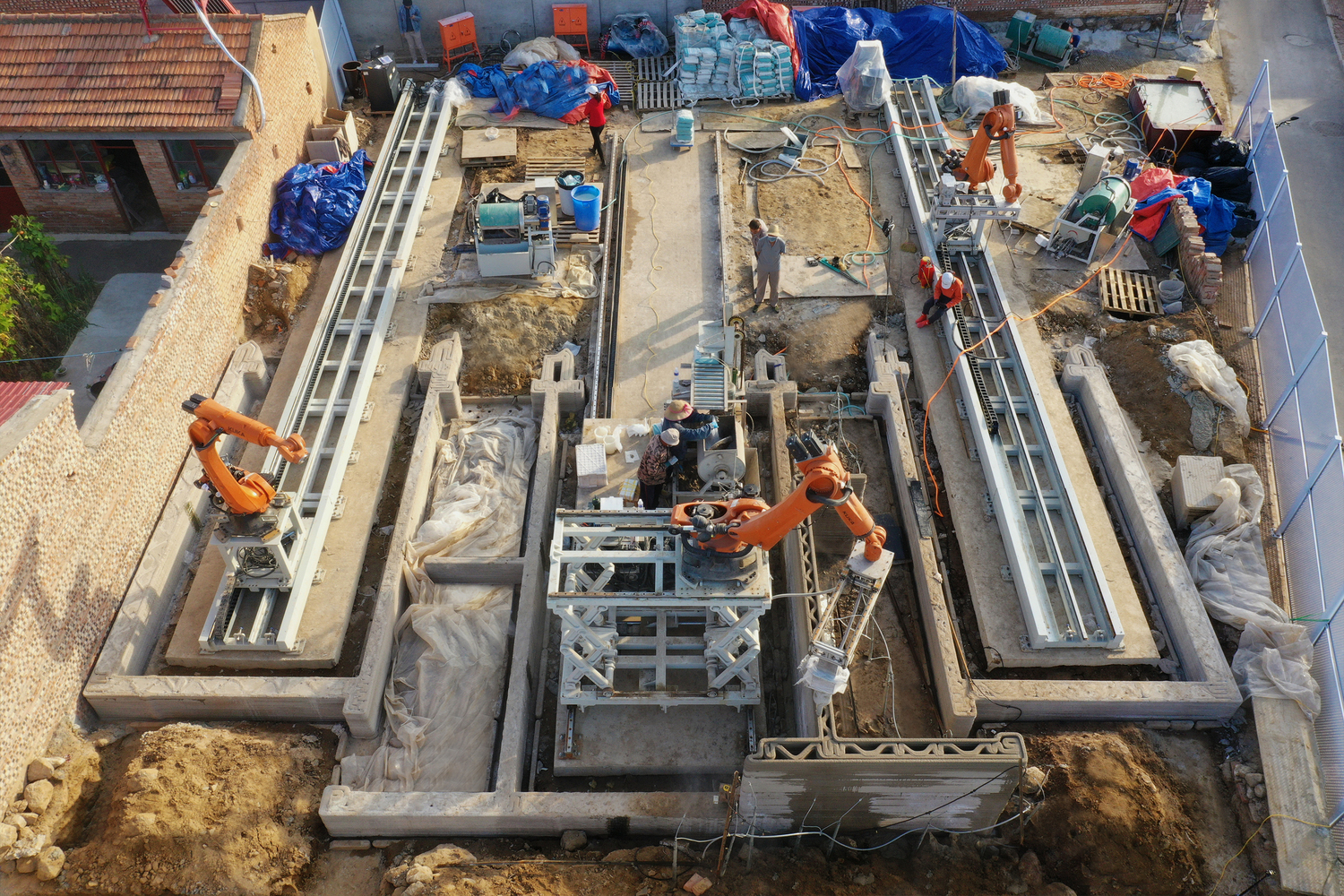Forget the mutually reinforcing buildup of their respective militaries – the real battle between the United States and China is in the field of 3D printing! You’ve probably heard of the 3D printed military barracks (produced by ICON’s Vulcan machine), which debuted in Texas last month. But you may not have heard yet about what was completed around the same time in Shenzhen, China: a 5,523-square-meter, intelligently constructed, 3D printed park, which, according to the head of the project’s technical support team, Professor Xu Weiguo of Tshingua University’s School of Architecture, took only around 10 weeks to finish.
The park, located in south China at the Shenzhen World Exhibition and Convention Center features benches, retaining walls, flower beds, sculptures and curbs that were 3D printed using industrial robotic arms outfitted with concrete extruders. Prof. Xu Weiguo, who is known for the “world’s largest” 3D printed bridge, has developed a somewhat novel method for additive construction in which multiple robotic arms can be deployed to a site, where, on rails and scissor lifts, they can work on a single project.
The extent to which they work is not entirely clear, but this method suggests that the professor’s team is working toward the concept of collaborative robots for additive construction. Others aiming at such technologies include Printstones and WASP, though MX3D and Branch Technology could feasibly attempt such a process with their industrial robotic arms, as well.
In the case of the Shenzen mark, not only does it make a major contribution to the area’s green space, but also heavily incorporates the use of recycled materials, including machine-shaped grains of waste sand, especially important in a global environment where sand has become a scarce commodity. And of all the nations in the world this consideration is surely most critical for China, which uses about half of the concrete on the planet. According to the Guardian, as of 2019, “…concrete is said to be responsible for 4-8 percent of the world’s C02.”
If humanity is able to convert parking lots into green spaces with 3D printing while using recycled sand in the production process, a possibility China has presented to us here in modular form, it would certainly be at least one crucial small step in the right direction. While 3D printing of course can’t do much about the quantity of water required in manufacturing concrete, we should be grateful for any amount of sand that can be derived from waste byproducts rather than the destruction of existing ecosystems.
Another advantage to what China has done here from a conservation perspective has to do with its use of intelligent construction. While potentially lower costs due to less trial and error in the building phase is one reason that many 3D print technicians endorse intelligent construction – using simulation models to “build” projects as much in advance as possible before the actual construction process begins – it’s surely conceivable that, in the long run, this could optimize the environmentally-friendly angle to large-scale 3D printing, as well.
Of course, this all depends on what the goals of the interested parties are; and, more and more these days, that all ties into corporate responsibility, which ultimately ties into consumer demand. In other words, the future of how sustainable 3D printing will be, will depend on 1) how much the consumer market ultimately drives the industry’s decisions; and 2) how much that market cares about ecologically sustainable business models.
But given the generally forward-thinking approaches on both the supply and demand sides of the 3D printing market, there is much greater reason to be hopeful about it in this area of the economy than, say, the latest attempt to get Americans on board with electric cars. Either way, this is the type of competition everyone should welcome. Here’s to hoping that at some point in the next few years we’ll see a Nixon-Khruschev style debate between Joe and Xi about whether gantry or robotic arm concrete printing is the most ecologically sound.



Recent Comments